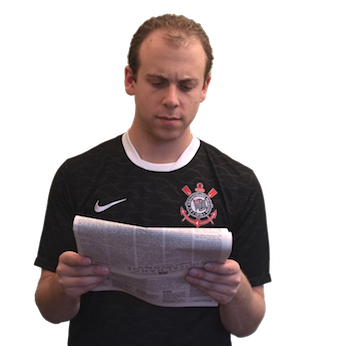This week’s collection of endorsed articles about sports that are good to read whether you are a sports fan or just sports curious don’t have a real theme. If there is anything that connects them, it’s the idea that greatness, even or maybe especially in sports, comes in all shapes and sizes. From the dominance of an obsessive compulsive quarterback to the rise of an enthusiastic young defensemen to the notoriety of disappearing foam, sports greatness is as fun to describe as it is far ranging.
Preparing for Peyton
by Brandon Flowers for the MMQB
Peyton Manning is a familiar face because of his widespread commercial work (“chicken parm you taste so good” and “cut that meat, cut that meat” are my favorites). In his commercials, Manning comes across as down-to-earth and self effacing. But what is it like to actually be across the field from him, trying to stop him from doing the thing he’s best in the world at. On the field Manning is totally ruthless, effective, and to hear defensive back Brandon Flowers write about the experience, terrifying.
That week felt like we were preparing for battle. You have to be precise in everything you do. You can’t give him even an inch. You have to conduct a flawless game plan.
We thought we had a good one. After studying film, we had this one blitz our coaches drew up that we thought we could drop in. We’d essentially send our whole left side of the defense at him. He wouldn’t see it coming. Well, somehow he did. Nobody jumped or gave any indication we were blitzing. Then right before the play, Peyton checked and threw a quick pass to the left side. Big gain, first down. We weren’t even showing the blitz! I have no idea how he knew.
The Ice Breaker
by Ben McGrath for The New Yorker
P.K. Subban sticks out like a sore thumb on an NHL ice hockey rink. The obvious reason for this is that he is the child of Carribean immigrants and his inherited dark skin is still unusual on hockey teams. Subban has also been criticized and celebrated for sticking out for other reasons — his unabashed enthusiasm and his style of play. The difficulty in writing about him is separating his truly unique person from the stereotypical characteristics that he is imbued with in the eyes of others because of his skin. McGrath tackles this task with grace and insight.
Hockey, like the country of its birth, has long valued understatement—sometimes comic understatement—and shunned salesmanship… The conformist power of Canadian hockey culture is such that even New Englanders and Swedes, after a few years of inhaling North American Zamboni fumes, will come to adopt a Manitoban prairie lilt, and speak in run-on sentences of cautious optimism.
Subban’s family believes that others have mistaken their beloved P.K.’s boisterous personality for something more sinister. “He is confident,” Maria says. “My son is a different kettle of fish.” He is also an inveterate camera hog, dating to the earliest birthday parties and home videos. I can vouch for his chirping outside the rink, too, turning up the radio at stoplights and drawing wayward looks from other drivers as he shimmies in his seat.
The arrival of a force as disruptive as Subban, in an institution as self-regarding as le Club du Hockey, is as significant, in its way, as Gretzky’s arrival was in Hollywood a quarter-century ago.
That Weird White Spray they Use in Soccer: An Investigation
by Jorge Arangure for Vice Sports
Ever since the World Cup this past summer, I have wondered about the disappearing spray that referees used to mark distances on set pieces. Arangure gives me more information in this article than I had bargained for and it’s very interesting. As with many inventions, the disappearing spray seems to have been the product of convergent evolution, and like many inventions, now seems to be marketed aggressively and simultaneously by multiple get-rich-quick hucksters.
The true star of the 2014 World Cup was a little spray can that referees carried in their pockets and took out during stoppages. At this point, the ref would press down on a nozzle and spray out a foamy residue to draw a line on the grass that players were not supposed to cross.
Then, after only a few moments, the line would magically disappear.Part of the spray’s popularity lay in that it lived in an almost philosophical universe. It existed and then suddenly it didn’t. It disappeared without leaving a trace of what had come before. And that was the allure. Its existence was never supposed to matter. The spray’s purpose was to mark a time and a place at a certain time and place and then it was supposed to go away forever. Who couldn’t use a magic metaphysical line to divide things every now and then in their everyday life?

